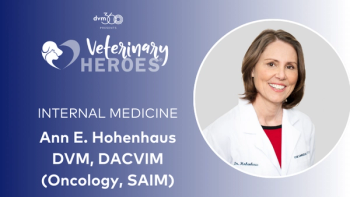
Creating the 'super staff'; it's worth the effort
There is a line from a song in "The King and I" that goes, "For if you become a teacher, by your students you'll be taught!"
There is a line from a song in "The King and I" that goes,"For if you become a teacher, by your students you'll be taught!"
This sentiment certainly applies to dairy practitioners who seek to teachclients. And it is especially true when we leave traditional practice andventure into management areas.
Although I left practice almost two years ago, I continue to provideconsulting service to one of my long-standing clients, who I will call Steve.I have learned a great deal from Steve over the years; indeed, I sometimesleft his farm wondering who really should be billing whom. (I never sharedthis particular thought with him.)
One area where Steve and I have worked a great deal is labor management.He currently milks around 1,300 adult animals, with roughly 18 employees.Several years ago, we began writing job descriptions, protocols, interviewguidelines and performance reviews. At first these efforts seemed very awkward,and at times they were ignored. However, we made progress, little by little.
At this time, Steve enjoys working with an outstanding staff, and getsimpressive results in terms of herd performance. We both think part of thisis due to all of our work just mentioned. However, the other component isthat he has continually tried to hire the very best people.
And as the farm performance improves, he notes that more and more goodpeople want to work for him, and the good people he already has want tostay. The end result is a stable, high-quality staff that needs little directsupervision.
Creating positions
There is a bit of irony in that last statement. When Steve and I firststarted to improve labor management, he was very "hands on".
One of his biggest complaints was that his staff needed constant oversight,and he frankly did not trust them to do many things.
Because he was so involved with doing the work, it was very difficultfor him to find time to write protocols or conduct performance reviews.Thus, progress came very slowly at first.
Now, he concedes that there are many days that he is not needed at allfor routine matters, and he can devote time to developing new ideas andfine-tuning existing procedures.
Recently, I attended the weekly staff meeting at Steve's farm, attendedby his six key employees. The areas of responsibility for these people arefeeding, youngstock, reproduction, milking, special needs cows and "floater".
The last person, who acts as a floater, more or less fills in where needed,but he is a talented and motivated employee who adds a great deal to thegroup. In reality, all six employees interact and pitch in as needed, butmost concentrate in one particular aspect of herd management.
Get an idea
Prior to this meeting, Steve had asked all six to bring five ideas toimprove herd performance.
He had instructed me to do the same, and also brought his own set. Iwas very impressed that all six employees came with five good ideas. Itwas obvious that each had given a lot of thought to what they presented.
When Steve's and my own ideas were added, he had 40 quality suggestions,although there was inevitably some duplication.
At this same meeting, the staff also reported on their area of management.For example, the feeder reported dry matter intakes, feed inventories andhis observation that he thought they were getting into another cutting ofhaylage. The reproduction manager reported recent pregnancy rates, and heencouraged the others to remain diligent with heat detection. The youngstockperson detailed some problems with illness, and he also reported on somegrowth rates. Steve took notes on all of this.
Ideas to action
From this meeting, Steve's task was to review all of the suggestionsand then decide which ones to implement.
At the next meeting, he reported back to the group his plan, invitingcomments and additional suggestions.
He explained why he had chosen some ideas and not others, and he madesure that no suggestion was totally ignored. He tried to use at least oneidea from each person.
Everything about Steve's situation can be applied to a veterinary practicethat uses employees. The busier you are, the more you need a well-trained,high-quality staff to support you.
Yet, when you are busy, it is very hard to find the time to do training,write protocols and conduct staff meetings.
I recall the same situation while I was in practice, and I also knowthat as we gradually disciplined ourselves to improving our personnel management,the practice ran better and better. It is truly worth the effort.
One of Steve's comments is worth further reflection. He noted that ashe has improved herd performance, it is easier to hire and keep good people.People like to be associated with success. And as he has added more andmore good people to the staff, herd performance continues to climb.
The snowball effect is real.
High staff morale makes a pleasant working environment, which leads tomore success.
It behooves practice owners and managers to create that kind of atmosphereif you want to enjoy a productive and cooperative staff.
The real question is this: Can you take time out from doing the technicalduties as a veterinarian to perform personnel management?
If you can, then your staff can support you in such a way that you caneventually accomplish far more in both areas.
Newsletter
From exam room tips to practice management insights, get trusted veterinary news delivered straight to your inbox—subscribe to dvm360.




